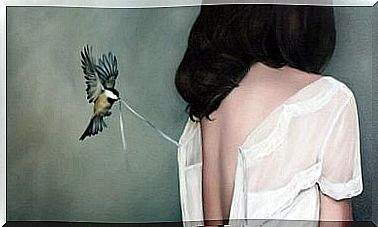Description And Characteristics Of Social Feelings

Social feelings are the conditions that occur when you are in the company of other people. Shame is an example of this, and basically occurs when a person bases their own value on the judgment of others. Such feelings can affect interpersonal relationships both positively and negatively and even the way you see yourself.
Each language has its own definition of specific emotional states that only occur between social groups. An example of this is the concept of hurt joy. This word can be defined as “rejoicing in the misfortune of others, and rejoicing in an evil done to another.”
Similarly, the French language has a much more enriching expression: retrouvailles . It describes the joy you usually experience when you meet someone you like but who you have not seen in a long time. Thus, people can experience many things, emotions and reactions in a society.
This is why researchers usually distinguish individual emotions from social emotions. The latter are perhaps more interesting because they transmit, are contagious and allow the creation of interpersonal bonds. Sometimes they even lead to problems and disagreements.

What are social feelings?
The role of emotions in each of these scenarios is crucial. But people are not always aware of this. In general, most of these psychophysiological states are understood as internal states that prepare you to develop a variety of behaviors to respond to environmental demands.
But think about it. Many of these challenges are related to groups of people surrounding you. Work stress, the complexity of romantic and family relationships, the bonds of your friends… Humans are social creatures, and therefore it is common for social feelings to stand out strongly.
Some studies, such as this one from the University of Amsterdam, point out that people are defined by a number of basic emotions such as joy, fear, sadness, disgust and surprise. If people did not live in social groups, we would never experience the conditions that result from being around people.
A child growing up on a desert island would probably never develop many of these feelings. This is because people acquire them exclusively in a social context, for better or worse.
Envy and jealousy
These do not mean the same thing, but we can place them in the same sphere. Both jealousy and envy are two of the most classic social emotions that only arise in relation to other people.
The desire to have what the other person has and the fear of losing the affection of others. We would never experience this if we were alone.
Social Emotions: Admiration
This dimension is like a Russian doll: there are many more dolls inside. Admiration is made of affection, surprise, attraction and joy. These are states we project onto others because something in them is attractive and inspiring. This is something we usually appreciate.
Compassion and solidarity
It is true that compassion can also be considered as an individual emotion. After all, it is possible and even common to feel pity for oneself. However, it really makes sense when you experience it in relation to others.
Compassion and a sense of solidarity are two valuable social feelings. Thanks to that, we can help and give meaning to the human social aspect.
Love is one of the social emotions
Falling in love is one of those things that nurtures and gives life to social feelings. To love in all forms, be it a partner, children, family or friends, is a psychic bond that gives you strength, meaning and purpose. Few social emotions are as transcendent as this one.

Social feelings: Shame
This social feeling is mixed with fear, as it makes it impossible to show yourself as you are. This fear actually lives on the prospect of not being liked or judged by others. This lack of acceptance, understanding and tolerance towards oneself appears only in social scenarios and forms a state that clearly erodes a person’s identity and self-esteem.
Guilt and remorse are social feelings
Finally, these are two of the most common social emotions. Feeling bad about hurting someone with their own behavior, words or attitudes has always been a recurring theme.
Realizing that you were not fair to anyone and being bothered by it helps you learn from your behavior and makes you a better person.
The purpose of all these states and inner experiences forms a unique transcendent psychic substance that only grows in group settings. Understanding this, knowing their purpose, and regulating them, will facilitate coexistence and well-being.









